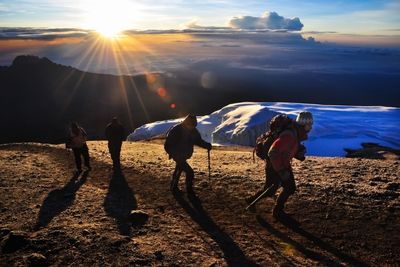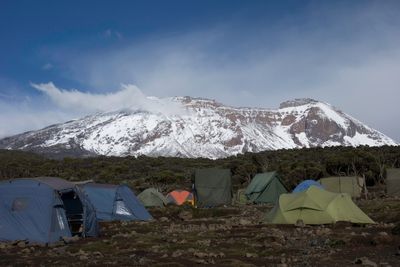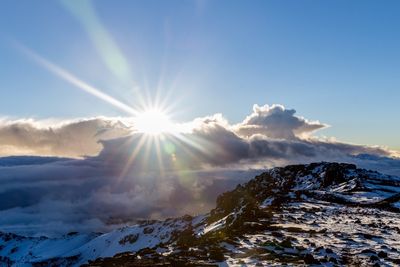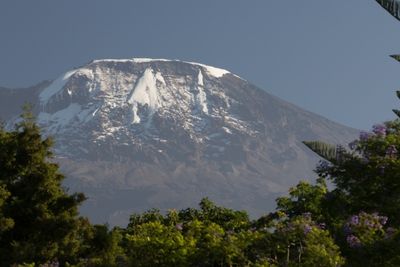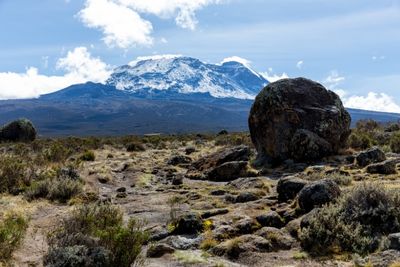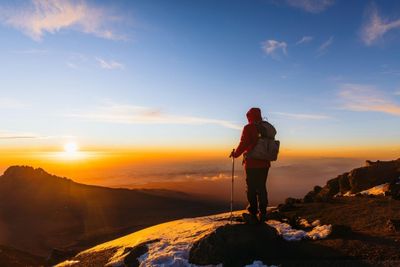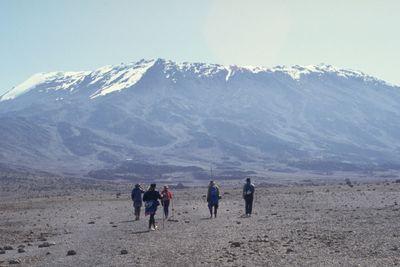Climbing Kilimanjaro Itineraries
What to Expect
We ensure all our itineraries include ample time for acclimatization, nutritious meals, and support from our experienced team. Whether you’re aiming for a quick summit or a leisurely climb with time to savor the experience, our Kilimanjaro itineraries cater to your needs.
Ready to Conquer Kilimanjaro?
Popular questions about Climb Mount Kilimanjaro
What is the best time to climb Mount Kilimanjaro?
The best times to climb Mount Kilimanjaro are during the dry seasons, which span from January to mid-March and from June to October. These periods typically offer the most favorable weather conditions, with clearer skies and less rain, providing a better hiking experience and increased visibility for enjoying the stunning landscapes.
Do I need any technical climbing skills to summit Kilimanjaro?
No technical climbing skills are required to summit Kilimanjaro. The mountain is considered a trekking peak, meaning the ascent involves hiking rather than technical mountaineering. However, it is essential to have a good level of physical fitness and stamina to handle the long days of trekking and the altitude. Our experienced guides will provide support and guidance throughout the journey.
How difficult is it to climb Mount Kilimanjaro?
Climbing Mount Kilimanjaro is a challenging endeavor primarily due to the high altitude and the physical demands of the trek. The difficulty varies depending on the route chosen and individual fitness levels. Proper acclimatization, physical preparation, and mental determination are crucial for success. Many climbers find the experience rewarding and achievable with the right preparation and support.
What should I pack for the climb?
Packing the right gear is essential for a successful and comfortable climb. Key items include sturdy hiking boots, warm clothing (layers are recommended), a waterproof jacket and pants, a high-quality sleeping bag rated for low temperatures, a daypack for carrying essentials, trekking poles, and personal items such as sunscreen, a hat, and gloves. A detailed packing list will be provided by your tour operator to ensure you are well-prepared for the journey.
How many days does the climb take?
The duration of the climb depends on the route you choose, ranging from 5 to 9 days. Shorter routes, such as the Marangu and Umbwe routes, can be completed in 5 to 6 days but offer less time for acclimatization. Longer routes, like the Machame, Lemosho, and Northern Circuit, take 7 to 9 days and provide better opportunities for acclimatization, increasing your chances of reaching the summit and enjoying the trek.
Is altitude sickness a concern, and how can it be managed?
Altitude sickness is a potential concern when climbing Kilimanjaro, as the summit stands at 5,895 meters (19,341 feet). Symptoms can include headaches, nausea, and dizziness. To manage altitude sickness, it is essential to choose a longer route for better acclimatization, ascend slowly and steadily, stay well-hydrated, and listen to your body. Our guides are trained to recognize symptoms of altitude sickness and will monitor your health closely, providing support and advice to ensure your safety.

